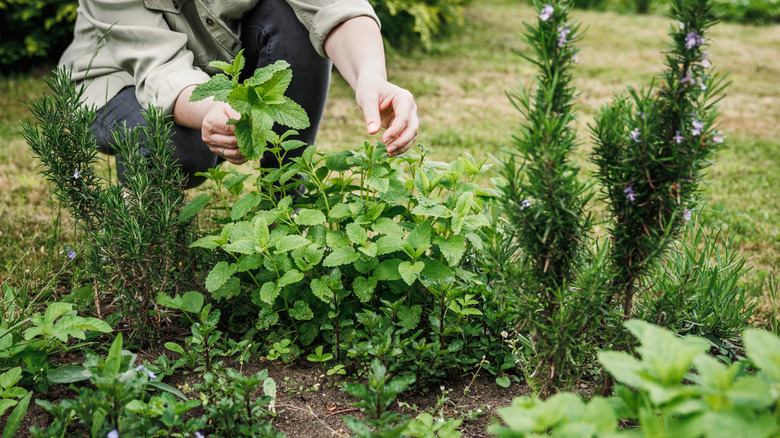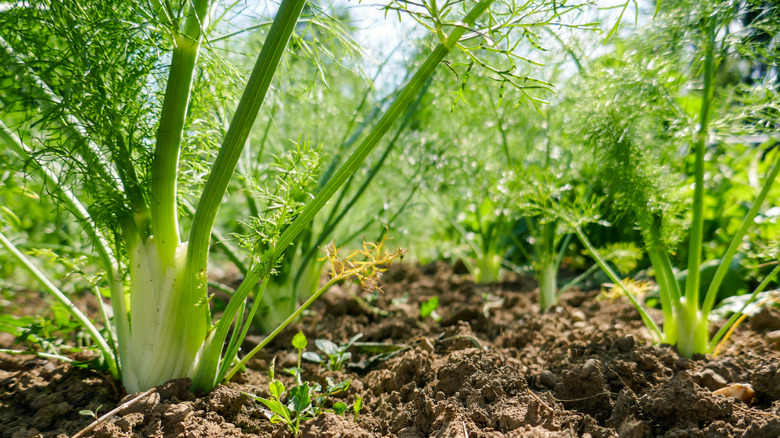Planting These Two Aromatic Herbs Together Is A Gardening Mistake You'll Regret
Fennel (Foeniculum vulgare) is known for its appeal to wide range of pollinators and its incompatibility with a wide range of crop-producing plants. For instance, it's a plant you should avoid growing near cucumbers and a bad companion for cabbages. That's because its roots release compounds that can stunt the growth of these vegetables. This problem affects many herbs as well.
One such victim is chamomile (Chamaemelum nobile). In addition to hindering the growth of these aromatic plants, fennel may beckon pests and diseases that damage them. For example, it sometimes draws aphids that feed on chamomile's stalks, stems, and leaves. On the flipside, some gardeners claim that chamomile makes fennel harder to cultivate and prevents it from producing seeds.
Furthermore, fennel grows so aggressively that it's likely to crowd out your chamomile, and can drive out native plant species when it takes over larger plots of land. This tendency is one reason it's considered invasive in Oregon, Washington, and West Virginia. Do not plant it in these states, and remove it if you find it there. It's okay to plant fennel elsewhere as long as you're aware of the risks. If it starts growing outside your garden, pull it out so it doesn't colonize other parts of your yard or spread into nearby fields. Since this plant has a burly taproot, it can be hard to eradicate once it lays claim to an area.
Alternative pairings for chamomile and fennel
Finding companions for chamomile isn't hard. For instance, growing chamomile and basil together works well since the chamomile enhances the basil's flavor. Beans, garlic, and cucumbers are a few other chamomile buddies to consider.
Finding neighbors for fennel is a taller order. Some gardeners find success growing mint (Mentha spp.) next to fennel. Since mint is also an aggressive grower, it's less likely to die off when fennel secretes growth-dampening substances or tries to commandeer the space they share. Plus, mint can repel the slugs and snails that bother fennel. Both mint and fennel thrive in a range of conditions, including alkaline or clay-heavy soil. Fennel does best in USDA hardiness zones 4 through 9, and mint can handle those and zones 2, 3, and 10 as well. It's wise to grow these plants in container gardens since they spread so readily.
Some cultivars of catmint (Nepeta spp.) also deserve a spot on your list of potential fennel companions. The type many people call catnip (Nepeta cataria) is considered invasive in Kentucky and West Virginia, so be sure not to plant it there. Even if you live elsewhere, other varieties make better garden and landscape plants. 'Walker's Low' (Nepeta x faassenii) grows heartily enough to persist beside fennel but will also respect the borders of your garden. Generally speaking, catmint excels in full sun and a range of soil textures in zones 3 through 8. Like fennel, it appreciates somewhat dry soil and will even tolerate drought.

